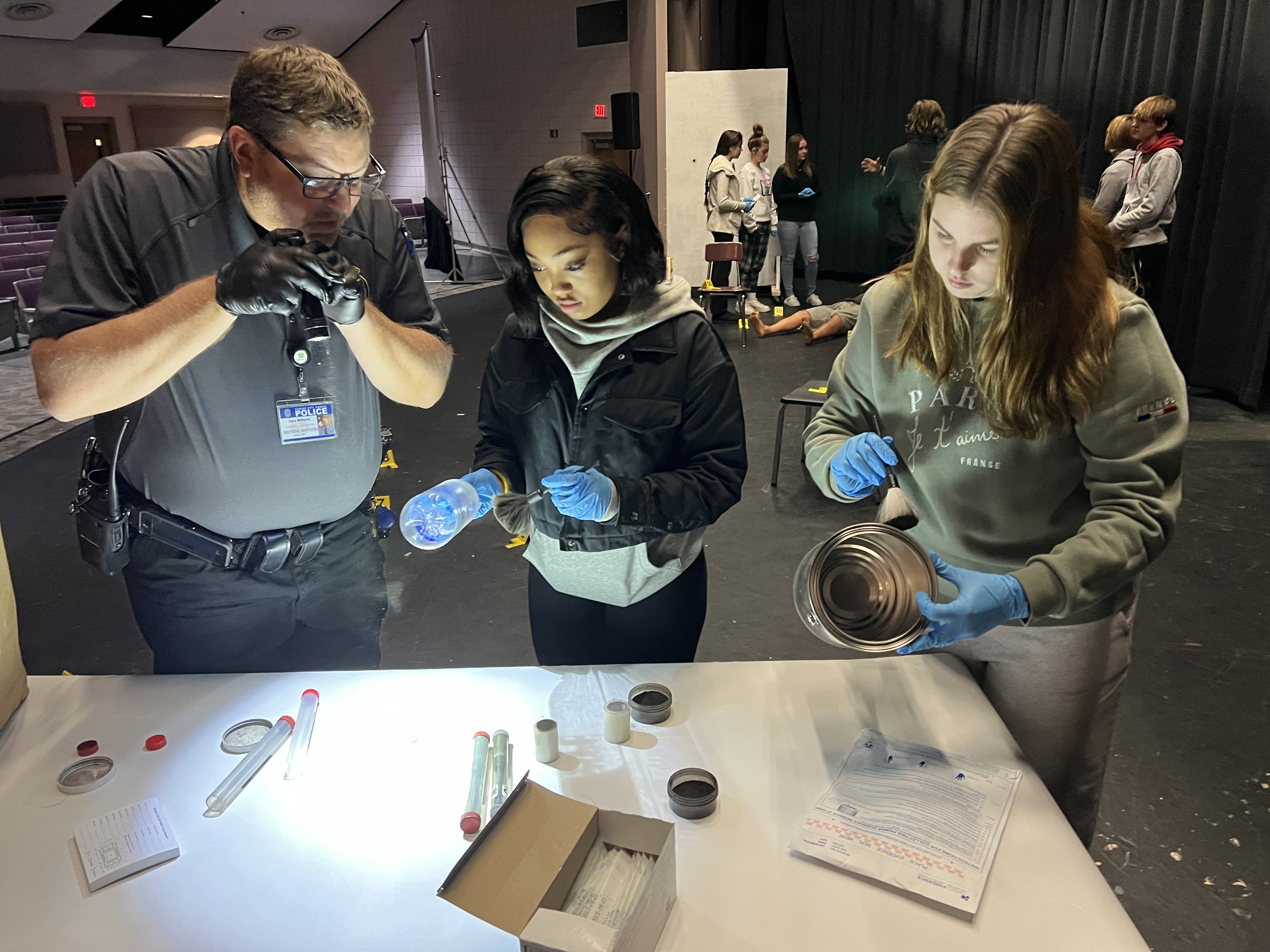Building Client-Connected Projects in All Content Areas

Every teacher has heard the dreaded question, ”When am I ever going to use this?” Real World Learning is the most relevant way to answer that question, and one of the most effective methods to provide these experiences is through client-connected projects (CCPs). CCPs ask students to collaborate with external clients—such as businesses, non-profits, and community organizations—to solve real-world problems. Through this work, students not only create connections between the content and the world around them; they see themselves as capable contributors to their futures.
I’ve seen the efficacy of client-connected through my work with the Academies at Piper High School. Every Piper student is engaged in one of our six Academies, selecting one of our 24 sectors in which to specialize. Each senior completes a Capstone Experience aligned with their Academy and Sector, which earns them a Market Value Asset (MVA). Because every student completes a project, we have had to broaden our thinking about what sorts of content lends itself to facilitating a CCP. Often, these sorts of projects are found in Career and Technical Ed courses, but they can be utilized in all high school classroom content areas. Here’s how client-connected projects can be conducted across various subjects.
1. STEM (Science, Technology, Engineering, and Mathematics)
STEM subjects naturally lend themselves to client-connected projects due to their problem-solving nature. Students can work with local businesses or research institutions on projects like developing a new product, creating software solutions, or conducting environmental impact assessments. For example, this past year, students from Piper High School
- Conducted an environmental sustainability assessment of the school district with the Board of Public Utilities
- Partnered with the Federal Aviation Administration to review recruiting materials
- Create JAVA programming curriculum modules for local FIRST Robotics organizations
2. Language Arts
In language arts, client-connected projects can involve collaboration with local businesses and organizations on content creation, marketing, and communications. Students can write articles, create promotional materials, or develop social media strategies. For instance, this past year, students at Piper High School
- Created a student-driven creative writing magazine for Piper elementary schools
- Wrote newsletters and social media posts for communications directors in several different businesses
3. Social Studies
Social studies classes can connect with local government agencies, historical societies, or cultural organizations to explore and address community issues. Projects might include developing educational materials about local history, conducting surveys on public opinion, or creating awareness campaigns about social issues. Piper Seniors conducted projects where they:
- Facilitated school board candidate questionnaires and forums
- Examined the emergency preparedness of specific facilities and made recommendations for improvements
- Dissected legal briefs for clarity and specificity
4. Arts and Music
Art and music classes can engage in client-connected projects by collaborating with local artists, galleries, or performance venues. Students can create public art installations, design promotional materials for events, or compose music for community productions. An art class might partner with a local business to design a mural, giving students practical experience in large-scale artistic projects and community engagement. For example, this past year, Piper High School students:
- Designed social media campaigns for a local arts-based non-profit organization
- Planned and ran art camps for elementary students
- Analyzed resources and pricing for local artists
5. Physical Education and Health
Physical education and health classes can work with local sports organizations, health clubs, or wellness centers to develop fitness programs, health campaigns, or community events. As an illustration, this past year, Piper students:
- Re-engineered the try-out and record-keeping processes for a community recreational sports organization
- Drafted off-season workout regimens for athletic teams
- Crafted treatment portfolios for physical therapy clients
Implementing Client-Connected Projects
To successfully implement client-connected projects in high school classrooms, educators can follow these steps:
- Identify Potential Clients: Reach out to local businesses, non-profits, and community organizations to find potential partners interested in collaborating on student projects.If you have a Real-World Learning Coordinator or a point-person in your district for this sort of work, be sure to start by talking with them to gain their insights.
- Define Project Goals: Work with the client to outline clear, achievable goals that align with both the educational objectives and the client’s needs. Sometimes, clients are not an exact fit for the project needed. It’s worth it to take the time to find the right partner.
- Integrate into Curriculum: Ensure the project is integrated into the curriculum, providing relevant academic content and meeting educational standards.Remember that CCPs are meant to support the work you’re doing, not add more to it. Ask yourself the vital question: what can this project replace?
- Support and Guidance: Provide students with the necessary support and guidance throughout the project, including regular check-ins and feedback sessions. Sometimes this support looks like giving students the space and time to think through their own solutions, while holding them accountable to specific time-tables.
- Assessment and Reflection: Evaluate the project based on both the process and the final product, encouraging students to reflect on their learning experiences and the skills they have developed. Make sure you design this step from the beginning, and realize that a project might technically fail and still meet all of the desired outcomes for your curriculum.
Client-connected projects offer a dynamic and engaging way to bring real-world learning into the high school classroom. By integrating these projects across all content areas, educators can provide students with valuable hands-on experiences, enhance their understanding of the subject matter, and better prepare them for future academic and career success. All content can benefit from extending student learning past the walls of the classroom itself.
